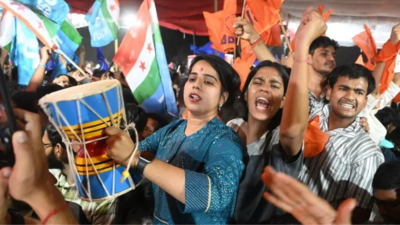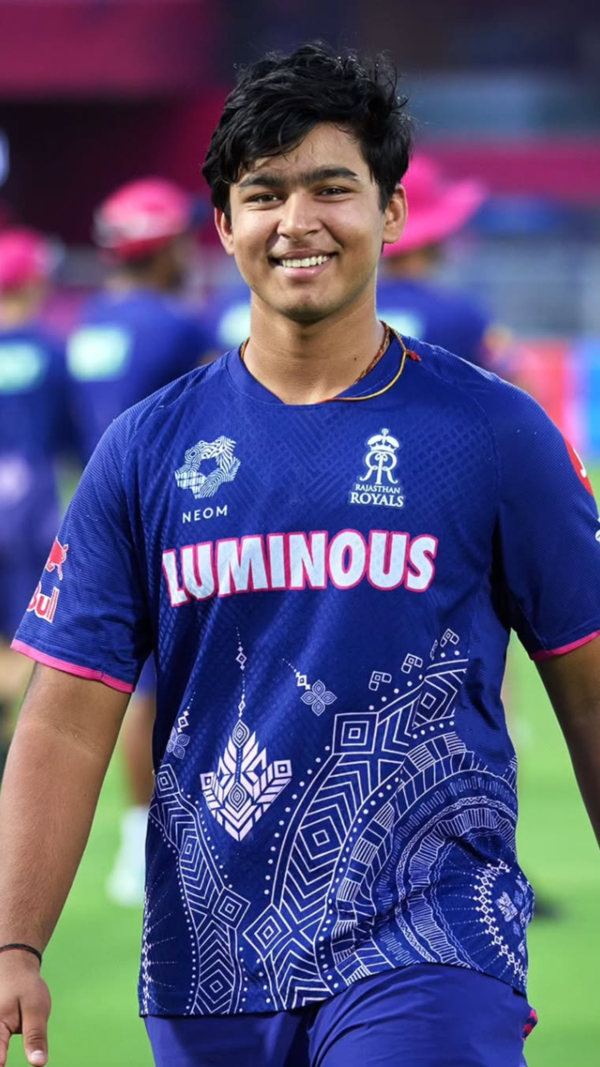- News
- City News
- delhi News
- JNUSU election results: What went right for ABVP, what didn’t for Left
Trending
JNUSU election results: What went right for ABVP, what didn’t for Left
In a closely contested election at Jawaharlal Nehru University, the Left retained key posts but with significantly reduced margins. ABVP made notable gains, securing the joint secretary position after a decade. A split in the Left vote and evolving student demographics, including the influence of CUET admissions, contributed to ABVP's improved performance.
NEW DELHI: After a decade, Akhil Bharatiya Vidyarthi Parishad made a dent in student politics at Jawaharlal Nehru University, long considered a Left bastion. In the recent student union elections, while the leftist combo of AISA and DSF retained the posts of president, vice-president and general secretary, their victories came with razor-thin margins: just 272 votes for president, 34 for vice-president and 114 for general secretary. ABVP clinched the post of joint secretary by a margin of 85 votes.
Last year, the margins were significantly wider when AISA, SFI, AISF and DSF contested together under a single banner, with the difference between the United Left's presidential candidate and ABVP's being 982 votes, that for vice-president being 755 votes, for general secretary 998 votes and for joint secretary, 397 votes. NOTA votes rose from 894 last year to 1,023 this year, indicating some illusion with the student political groups.
You Can Also Check: Delhi AQI | Weather in Delhi | Bank Holidays in Delhi | Public Holidays in Delhi
A closer look at the results reveals that the split in the Left, with SFI forming a separate alliance with a faction of BAPSA, AISF and PSA, critically fractured the anti-ABVP vote. Had the Left fought unitedly, it would have secured not only more comfortable victories but also not lost the one seat to ABVP. SFI-BAPSA's presidential candidate Tayabba secured 918 votes, while its general secretary nominee Ramnivas collected 675 votes — numbers that, when added to the United Left's tally, would have widened the margin with ABVP substantially.
The last time the RSS-affiliated student organisation won a central post in JNUSU was in 2016. Since then, the Left has dominated fully. One reason for the changing power dynamic shown by the 2025 polls is the evolving student demographics. Since JNU adopted CUET, the centralised entrance exam system, the incoming student batches are often seen as less ideologically driven and more diverse in their backgrounds. Many of them do not align with Left politics, creating a condition for ABVP to cash in. Another important factor was ABVP's ability to navigate the internal divisions within the Left.
Also, the Northeast factor played a significant role this year. Disillusioned by what they perceived as inadequate representation by both Left and right outfits, the Northeast students fielded their own independent presidential candidate, Yari Nayam. They had felt let down after the Barak Hostel, which they claimed was exclusively built for Northeast students, was opened up for others. In the event, Nayam secured 1,184 votes — a considerable number.
The central panel election results underline the new competitiveness: ABVP's Vaibhav secured a thin win for joint secretary, having got 1,518 votes to PSA's Nigam who polled 1,256. The 85-vote margin showed how close the race was and how the fragmented Left votes benefited ABVP.
The fresher batch's arrival also played a crucial role. New students, less tied to older ideological loyalties and more focused on practical campus issues, proved to be swing voters. Their preference for alternatives to the traditional Left likely bolstered ABVP's numbers, not only in the central panel but also in councillor elections.
The 2025 JNUSU elections signal a big shift in JNU's political landscape. While the Left has retained key posts, its once-unassailable grip on the student union's power structure was shown as weakened. ABVP's rise, fuelled by fresh demographics, internal fractures in the Left and a more competitive electoral field, seems to mark the beginning of more equal contests in the university.
End of Article
Follow Us On Social Media









